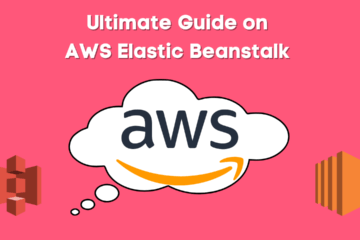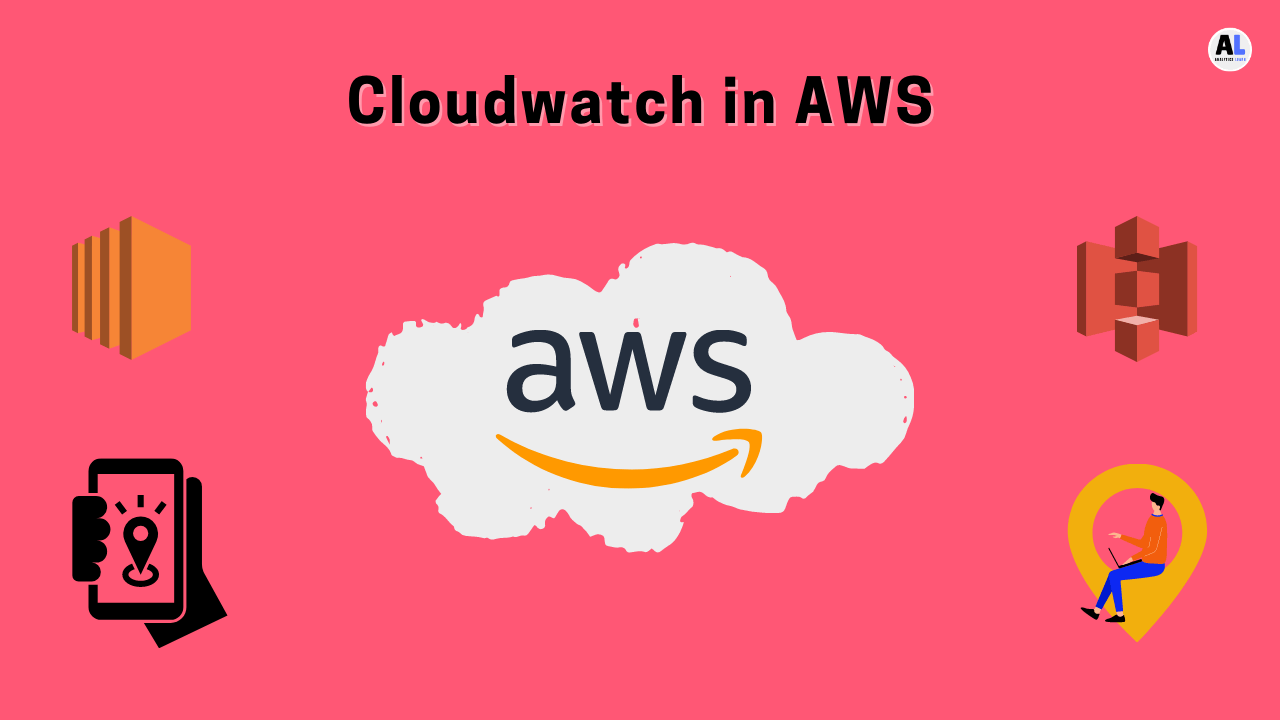In this Blog Post, we will be focusing on the AWS Lambda function and its different Usabilities of it in the AWS cloud system.
This article goes over what serverless computing is, how AWS Lambda function works, and how you can benefit from using the Lambda function.
In order to better understand AWS Lambda, we need to first understand the benefits of serverless computing.
Serverless computing provides a number of benefits over traditional servers such as scalable computing and boosts security.
Amazon Web Services provides a great service for deploying code without worrying about managing servers, It’s called Lambda, It’s well-suited for event-driven systems.
What is AWS Lambda?
The buzz around cloud computing is real, There’s no better proof of this fact than Amazon Web Services (AWS) are driving the serverless revolution with their Lambda services.
AWS Lambda lets you run code without provisioning or managing servers by letting AWS manage to compute resources for you.
AWS Lambda is a serverless computing service you can use to upload your code to AWS without worrying about managing any servers.
The service automatically allocates compute resources based on the requests it receives.
What is AWS Lambda Function?
Amazon Web Services (AWS) Lambda service allows you to upload pieces of code, known as functions.
These functions are executed when an event occurs. The supported events include AWS service calls and tasks triggered by custom applications or devices.
Here’s an overview of this extensible and flexible compute option available from AWS.
What is Serverless Computing?
If you haven’t heard the news, serverless computing is having a moment.
This relatively new term, which has been bandied about for years by conservative techies, refers to the ephemeral nature of how most applications are run today.
Where individual functions or tasks can be shut down as soon as they’re no longer needed and only consume resources for as long as absolutely necessary.
And with this idea comes a whole host of benefits (and concerns), all of which will be covered in this guide.
Serverless computing is one of the hottest new technologies, One reason is that it solves a very real problem companies are having: they want to run applications without investing in servers.
By taking on this burden of server management, serverless computing lets developers write code without worrying about scaling or performance tuning.
AWS Lambda Architecture
AWS Lambda is a serverless compute service by Amazon Web Services.
Serverless computing means that you don’t have to worry about the underlying infrastructure and can run your code without having to provision a virtual machine.
However, this does introduce some downsides, such as increased latency because of the additional overhead from managing the connections between the application code and the AWS Lambda service.
Amazon Web Services (AWS) Lambda is a compute service that runs your code in response to events and automatically manages the compute resources for you, making it easier for developers.
Lambda is a serverless compute service where Amazon manages the provisioning, scaling, and operation of nodes.
It’s free when used in conjunction with other AWS products and services.
You can upload code through API endpoints or a set of pre-defined triggers that can be triggered upon various actions or events such as an object being added to an S3 bucket or an item being added to an Amazon DynamoDB table.
The compute resources in Lambda are managed by Amazon and you don’t have to worry about setting up servers to run your code.
AWS Lambda vs EC2
AWS Lambda is a service that allows you to do all the heavy lifting for your application without having to maintain the servers.
A lot of the scalability is done for you by AWS Lambda, you just upload your code, and voila! The best thing about AWS Lambda is that it scales with whatever you need.
EC2 on the other hand can be more complicated because it needs to be scaled manually.
Related Article: What is EC2 in AWS? – Ultimate Guide on EC2
Sharing Code between Function and VPC
An AWS Lambda function is a small piece of code stored in AWS and run on demand. It can also be called by other AWS services and integrates with many tools and frameworks.
Writing a lambda function is easy, but before we get to that, let’s talk about the structure of an AWS Lambda function.
What language it needs to be written in, where it needs to go, what permissions are needed to write it, how much storage space it will take up, and how long it takes for the code to execute.
Related Article: What is AWS VPC? – Guide on Virtual Private Cloud
IAM with AWL
The IAM security system can be referenced through two types. IAM with AWS Lambda is about the user having an account on AWS.
Which allows them to manage policies and permissions they need, On the other hand, IAM with AWL is about AWS managing the user’s account for them.
This way, users do not have to spend time on creating or updating policies or permissions they need.
What are the Benefits of AWS Lambda?
AWS Lambda offers an event-driven, serverless compute service. As a result, you don’t need to manage any infrastructure.
Another benefit of AWS Lambda is the pricing model which is based on usage, You are charged for the time your code executes in milliseconds.
It allows developers to run code in response to events without having to manage the underlying compute infrastructure.
Lambda lets you run code when it’s needed and only when it’s needed.
You can set up a lambda function that will automatically trigger when new items are added to a specific S3 bucket or DynamoDB table.
How does it work with other Technologies in AWS?
AWS Lambda functions are triggered by events or time-based events. For example, you create a function that runs every day at noon.
A Lambda function can also be triggered by another AWS service.
For example, if you archive an Amazon S3 object to Glacier, Lambda will execute the function on the object’s expiration date.
How to Deploy a Lambda Function?
There are many situations where you need to run a piece of code in response to an event, such as when a file is uploaded to Amazon S3 or when an object changes in an Amazon DynamoDB table.
In these cases, AWS Lambda lets you run code without provisioning or managing servers.
Deploying AWS Lambda functions is the easy part. Much harder is the actual API integration, which was the subject of many fora and blog posts on how to deploy an AWS lambda function.
Those steps can be hard to find and understand even when you know what you’re looking for.
AWS Lambda functions are restricted to only being able to run code that can be executed in 200ms or less, with a maximum execution time of 300 seconds.
This is because AWS Lambda runs code on a finite and shared pool of EC2 instances.
The serverless framework is a python package that allows you to create and deploy AWS Lambda functions with ease.
By using this tool, you can also execute local unit tests on your computer, as well as continuous integration testing over at Travis.
Why Choose AWS Lambda?
AWS Lambda was launched in November 2014 and, after 2 years of development, is now being used by several big companies, such as Accenture, CapitalOne, and Imgur.
Although it wasn’t the first product designed to provide a way to run code without provisioning or managing servers.
It made a name for itself due to its seamless integration with popular programming languages and frameworks.
How to Use AWS Lambda?
With AWS Lambda, you upload your code to AWS and the service will run your code for you whenever needed.
The service automatically allocates compute resources based on the requests it receives.
There are no servers or instances involved in the process all you need to do is provide the code that you wish to run, configure a few settings and then sit back, relax and wait for AWS to test your code.
Best Practices for AWS Lambda Function
Lambda functions are serverless computing resources that allow you to upload code and create an AWS Lambda function.
This means that there is no need for servers or deployment. You simply create the function, write the code, and deploy it to AWS Lambda.
Lambda is essentially an online service that lets you run code without the need for any servers.
It does this by running your code in response to events, such as requests made to an API, or changes in data.
This means you don’t need to worry about scaling your code or it unexpectedly crashing.
You just upload your code and then Lambda takes care of the rest.
How to Create an AWS Lambda Function?
AWS Lambdas are event-driven, meaning they are triggered by events. These event sources include API calls, CloudWatch Events, and S3 bucket notifications.
AWS Lambdas function can be written in specific programing like Java or Node.js, among others.
The function is then invoked when the event source triggers an invocation.
AWS Lambda is a serverless computing service where you can upload your code and pay only for what you use.
AWS Lambda can be used to create an API endpoint, process messages, and other tasks.
To create an AWS Lambda function, first, open the AWS Console and navigate to “Services” -> “Lambda”.
There you will see a screen to configure your function’s triggers, permissions, and other settings.
You’ll then enter the code that AWS Lambda will execute as part of the setup configuration wizard.
Related Article: What is Cloudwatch in AWS?
What are the Drawbacks of Lambda?
The biggest drawback to using Lambda is that it’s designed for a single-purpose application.
If you want to have a more complex app or need concurrency, then Lambda may not be the best choice.
AWS Lambda Pricing
In the Lambda console, you’ll also see what your approximate monthly cost will be (in US dollars).
These prices are based on the amount of compute time used in a month as well as data transferred and long-running functions.
The longer your code runs, the lower the price per second will be:

AWS Lambda pricing is implemented in a way that takes advantage of the variable pricing model.
AWS Lambda pricing is variable, which means that if you’re using less computing power, your price will be lower.
The prices are also based on the length of time the code runs. A good way to make sure you’re always on the cheapest plan is to set a constraint for how long your code can run–it only has access to 500ms if it’s free tier eligible.
Conclusion
I hope this guide has been helpful in explaining the basics of AWS Lambda functions.
Amazon Web Services (AWS) Lambda is a dynamically scalable compute service that runs code in response to events and automatically manages the computing resources required by that code.

Presenting the Data Engineer Team, a dedicated group of IT professionals who serve as valuable contributors to analyticslearn.com as authors. Comprising skilled data engineers, this team consists of adept technical writers specializing in various data engineering tools and technologies. Their collective mission is to foster a more skillful community for Data Engineers and learners alike. Join us as we delve into insightful content curated by this proficient team, aimed at enriching your knowledge and expertise in the realm of data engineering.










